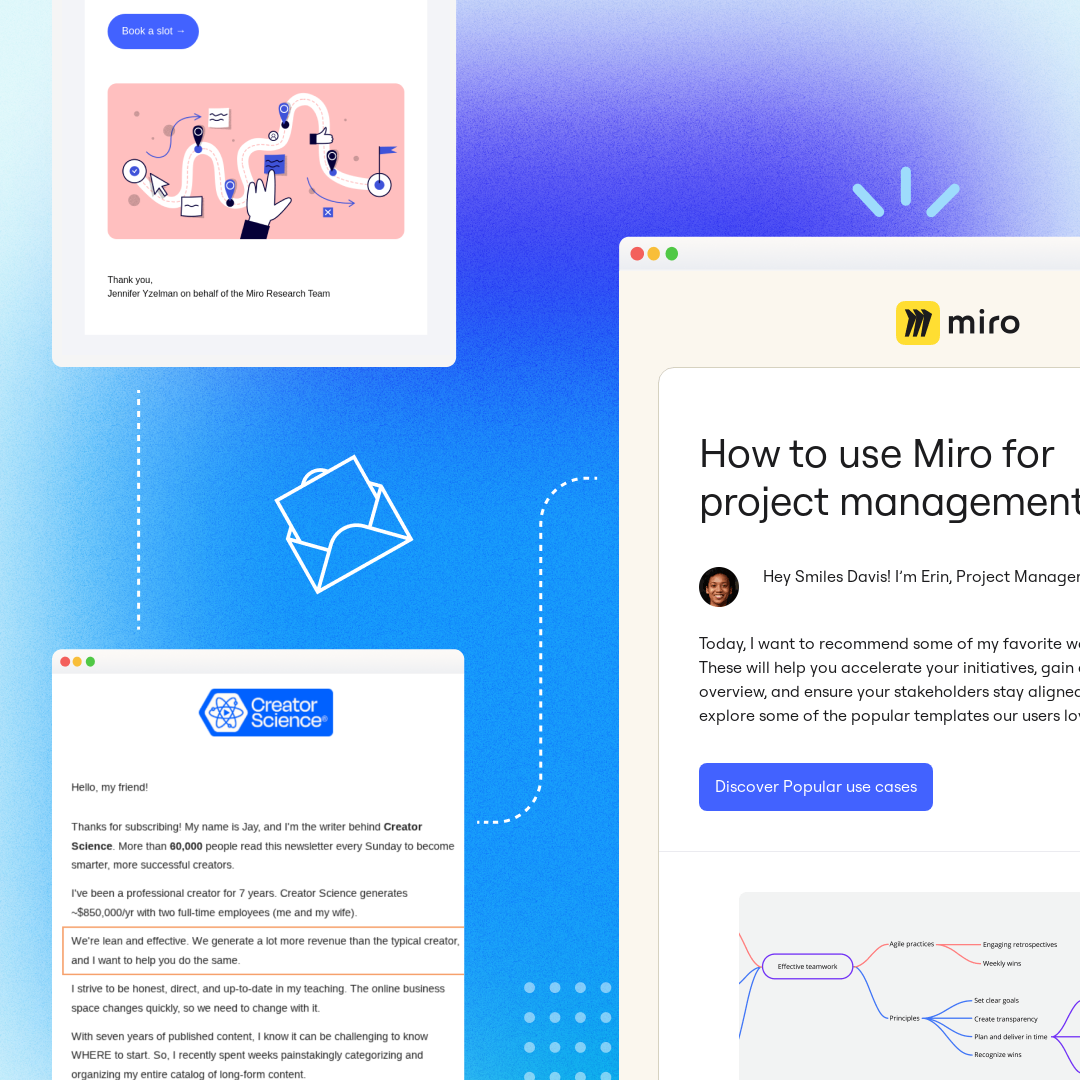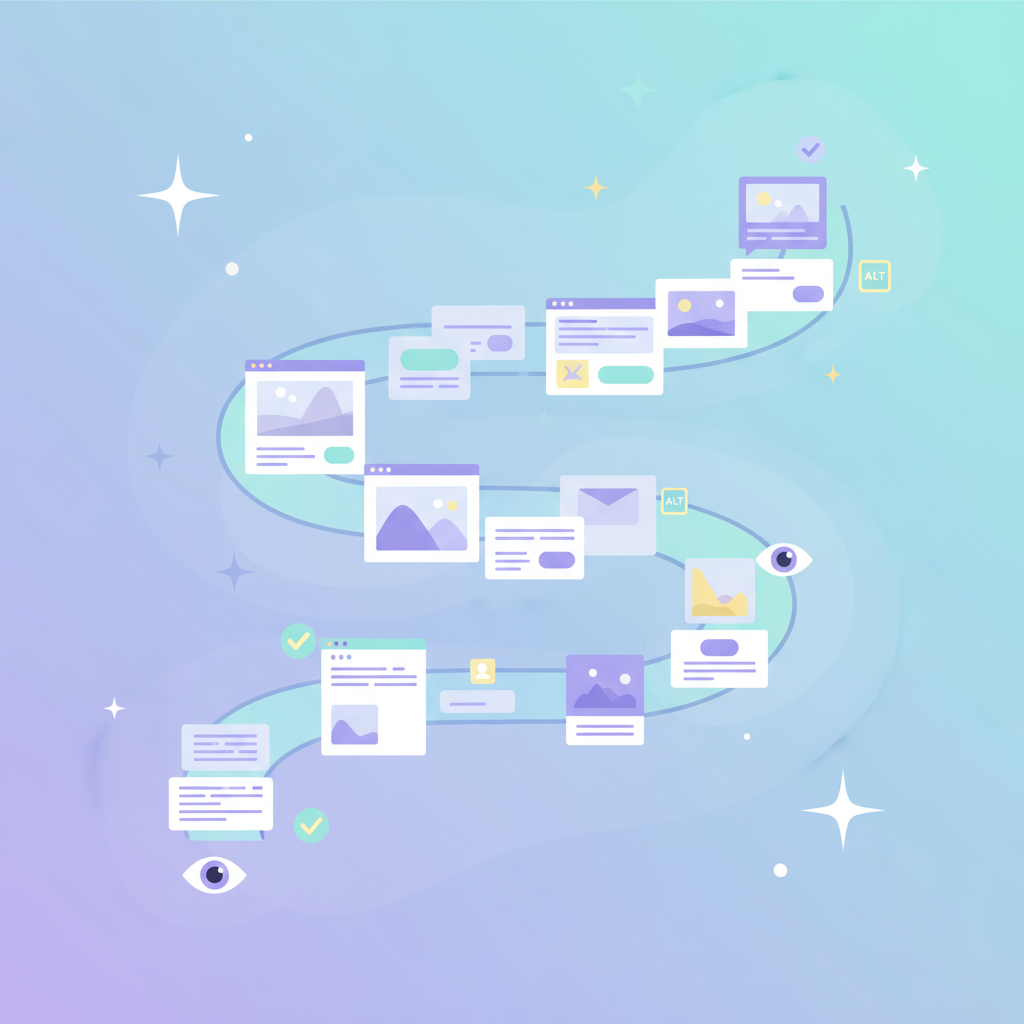
Cold email marketing campaigns can have a lot of benefits for your business: These unsolicited emails are scalable and effective. But if you don’t handle them correctly, your cold emails might be marked as spam.Ready to launch your own campaign? Keep reading for more information on how to write a cold email that lands in the recipient’s inbox.
Cold email marketing campaigns can have a lot of benefits for your business: These unsolicited emails are scalable and effective.
What Is a Cold Email Marketing Campaign?
Cold emails are a type of email marketing that delivers a personalized message to a recipient with the goal of starting a conversation. These messages are different from a bulk email sent to hundreds or even thousands of customers; cold emails target a smaller subset of people. Generally, you’ll only send a cold email to a lead that you’ve researched and defined as a quality prospect.Cold email campaigns are effective: Companies have seen up to 60% response rates and 80% engagement rates from cold emails. Small businesses in particular can see huge benefits from sending well-written messages. Bottom line — cold email marketing campaigns can pay off big-time.However, if you’re going to launch a cold email marketing strategy, it’s important to do a little research first on best practices. These campaigns are sometimes mistaken for spam. Today, we’re highlighting a few of the best tips on how to write a cold email so your messages land safely in the recipient’s inbox and do their job.
#1. Follow the rules
Play by the book and follow the Federal Trade Commission’s rules for sending emails to people you don’t know:
- Don’t include false information. Your “From” information should accurately describe who you are.
- Don’t use misleading subject lines. Cold email subject lines need to be clear about what’s in the message.
- Identify the message as an ad. Be upfront about the fact that your email is an advertisement.
- Include your physical address. If you don’t have a street address, use a P.O. box.
- Explain how to unsubscribe. Allow recipients to opt-out of future emails. (We recommend including this option in the footer or email signature.)
- Promptly honor any unsubscribe requests. If someone asks to be unsubscribed, take them off your list within 10 business days.
- Pay attention to what others are doing on your behalf. If another company is taking care of your email marketing, remember that you’re still legally responsible.
Not following these guidelines can result in costly fines and legal troubles. But if your cold email marketing campaign abides by these rules, you’re good to go.
#2. Decide on your email address and “From” line
Many businesses choose to create a new email address to send cold emails. When you’re first getting started, cold email marketing will probably take some trial and error, and you might put the reputation of your current domain at risk. That’s why creating a new domain can often be a smart choice.Once your email address is ready, decide on what your “From” line will say. You can try your company’s name, publication name, a person’s name or a mixture of the above (see a few examples from our inbox below). Test a few different “From” lines to figure out which ones work best.

#3. Personalize your emails
Personalization is an effective strategy to use with any type of email campaign. But with cold emails, it’s especially essential. Personalizing cold emails can help differentiate them from spam. In fact, personalization is important for 73% of decision makers, and accordingly, campaigns without personalization get a mere 2.8% reply rate.
Use the recipient’s first name and find other ways to make a personal connection, too.For instance, you might open the message by saying, “I noticed you’re located in Chicago — we work with hundreds of customers there” or “I see on LinkedIn that you work with [name.] He/she’s a good friend of mine!” Personalized emails get higher open rates and click rates.
#4. Use plain text
Cold emails are typically plain text emails, not HTML. HTML messages are designed and formatted with images, links and more. Plain text emails are just text on a page and are far less likely than HTML emails to be identified as spam. What’s more, plain text emails perform well on mobile devices and load more quickly. Most importantly, plain text emails feel more personal because they look like emails you’d get from a friend.Subject line: Low-cost writers

#5. Cold email subject lines
Your cold email subject lines should be personalized and clearly explain what’s in the email. Keep the subject line short and conversational. Using the word “your” or asking a question can also make people curious.Here are a few cold email subject lines sourced from our inbox:
- What you’re missing in the Den this week
- , you’re invited
- Are you making these mistakes?
- My biggest mistake
- , just a heads-up
These subject lines all invite curiosity, encouraging the reader to open the email and find out more.
#6. How to write a cold email
When you sit down to write your cold email, there are a few things to keep in mind as you structure it. The basics: Make a personal connection, explain what the email is about and end with a call to action inviting the recipient to chat further.As you explain your proposition, make sure to be clear about what’s in it for the reader. How would they benefit from saying yes to your ask? When you close, ask for a simple response (such as an email back) and make sure your email signature includes all of your relevant information.
#7. Remember to follow up
Don’t forget to follow up on your cold emails. One study showed that campaigns with 4-7 emails per sequence received three times more responses than campaigns with only 1-3 emails in a sequence. Send your follow-up emails several days apart so they don’t seem spammy. And if your follow-up process is automated, remember to cut it off once you get a response.
Wrap-up: Cold email marketing
After you successfully connect with a plain text cold email, you'll probably want to create future emails for your audience with more HTML design elements! Choose from one of the hundreds of HTML email templates in the BEE catalog or create your own from scratch with our drag-and-drop email editor. Cold emails have huge potential when they’re done the right way. With these tips, you’re ready to help your business grow!
Share this post with your friends! Pin it on Pinterest ?




